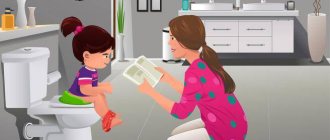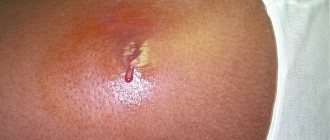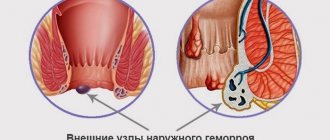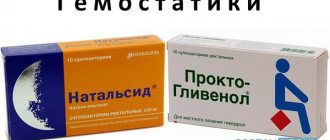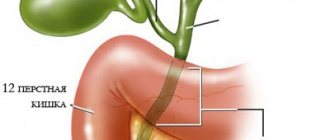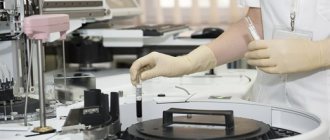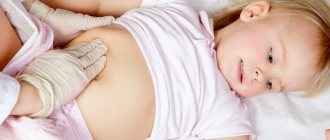Causes
Hemorrhoids in newborns form for several reasons:
Baby's constant crying
- Congestion in the pelvic organs as a pathological phenomenon after labor. In this case, children are born with varicose veins of the anorectal and rectal veins. Against the background of this phenomenon, hemorrhoids develop from the first minutes of life. Such children are observed by a specialist to undergo correct and safe treatment.
- Hemorrhoidal disease in infancy also occurs due to improper functioning of the gastrointestinal tract. A failure of the digestive system occurs due to an unbalanced diet of a mother who feeds her baby with breast milk. Digestive failure is expressed by pathological bowel movements of the baby. You cannot put your child on the potty for a long time, as such gatherings can end in the formation of hemorrhoidal cones. Children are potty trained not by sitting on it for a long time, but by developing attentiveness to the urge.
- Hemorrhoids in infancy can form due to low activity. If the child is kept lying in the crib all the time, then his circulation in the bloodstream is disrupted, including in the anorectal veins of the rectum and anus. Plasma stagnation is also observed in those children who spend a long time in their leisure time sitting in front of the TV or computer. The child must be active (running, jumping).
- Most often, children develop hemorrhoids against the background of a genetic predisposition to varicose veins. The disease often begins in infancy.
Symptoms and stages
Hemorrhoids in newborns appear 3-6 days after birth. Babies may experience slight bleeding, called hemorrhage. Blood loss is possible both external and internal. This depends on the location of the hemorrhoidal formations. Hemorrhoidal pathology is characterized by 4 degrees of development. When a baby experiences pain in the anorectal canal or traces of blood in the feces, the help of a pediatrician is needed. After examining the child, the doctor will determine further diagnostic steps, make a diagnosis and select effective therapy that is safe for the patient at this age.
The symptoms of hemorrhoidal disease are distributed according to the degrees of development:
Stages of the disease
- First degree - The disease is determined by the baby’s constant crying, he has poor appetite, and there is slight blood loss from the butt. Cracks may form around the anus, and the pattern of blood vessels on the intestinal mucous tissues is pronounced.
- Second degree - prolapse of nodular formations is observed, the lumps are reduced by hand. The baby suffers from abdominal pain, flatulence, visible discharge from the anus, the child suffers from itching with burning, blood loss, and loss of lumps (especially when crying).
- The third degree of hemorrhoids in children is expressed by increased blood loss, unbearable pain, the child cries non-stop, and a possible increase in temperature. If lumps fall out, they cannot be straightened without a special device. To eliminate the leak, it is better to contact medical professionals.
- At the fourth stage, in children, sphincter incontinence (anal) is added to the existing symptoms; upon examination, the baby’s anus and hemorrhoidal cones are inflamed. Blood loss is observed from dilated veins, which affects the general health (sharp weight loss). Hemorrhoidal cones fall out almost constantly and it is no longer possible to set them back at all. In such situations, the doctor recommends surgery to remove hemorrhoids.
Among the more common recognizable signs of childhood hemorrhoids are: difficult stool, due to intestinal dysbiosis or other problems with the flora. Dilated veins are visible through the thin mucosal tissue. This pathology is a congenital phenomenon.
Classification
Hemorrhoidal pathology is classified into two forms: internal and external. Hemorrhoid cones in infants are not as pronounced as in adult patients. External formation is more painful than internal one. The cavity of the cone is filled with blood; without timely treatment, the blood thickens and lumps form, which are accompanied by severe pain. The lump hurts very much when you touch it.
Thrombosis refers to prolapsed external lumps thrombosed by blood clots. The fallen cones are purple or bluish in color. The internal cones are located deep in the rectal organ. With this form of hemorrhoidal pathology, there are no severe painful symptoms. This is due to the absence of sensitive nerve roots in the mucous tissues.
This disease is diagnosed by bleeding. Internal hemorrhoids look like small lumps with accumulated blood. Without timely treatment, inflammation can become complicated, even paraproctitis in small newborn babies is possible, or even worse, a fistula can form in a newborn.
Remember.
Hemorrhoids in children can develop in two scenarios: internal node or external. And if the external form leaves no doubt about the diagnosis, then internal hemorrhoids in children usually occur without significant symptoms.
The main sign by which the presence of external hemorrhoids in children can be determined is a lump or swelling in the anal area. At the initial stage, the hemorrhoidal node may not bother you, but then it will begin to become inflamed, hurt and bleed.
There are three stages of childhood hemorrhoids:
- Slight increase in nodes, slight discomfort during bowel movements;
- Hemorrhoids enlarge and can be felt (in the external form), swelling and compaction appear around the anus;
- Prolapse of hemorrhoids is observed, more often during defecation, the process of which is accompanied by pain.
Lack of therapy for children risks thrombosis of hemorrhoids, which is accompanied by severe pain and high general body temperature. But you cannot diagnose a child with hemorrhoids on your own. Only a specialist can do this. Blood in the stool and lumps around the anus can be signs of completely different diseases. Carrying out treatment at home, especially when it comes to the health of a child, is extremely dangerous.
It comes to surgical intervention and excision of hemorrhoids in children very rarely, only in extremely advanced cases.
Folk remedies
When hemorrhoids develop in a baby, parents prefer to resort to alternative medicine. Warm baths, compresses, lotions and microenemas provide fewer side effects, while the therapeutic effect is no weaker. Below are several useful recipes for hemorrhoids that are approved for use even by children:
- Prepare a decoction of chamomile (for 1 tablespoon of boiling water you need to take 1 tablespoon of dried raw materials). Soak several layers of gauze in the cooled mixture and apply to the perineal area. Do not remove the compress until the gauze is dry. Using the same principle, you can use a decoction of calendula and oak bark.
- Rosehip or sea buckthorn oil in a volume of 100 ml must be preheated to a temperature of 38 degrees. Then take it into the enema and let it into the rectum. In this way, you can significantly speed up the healing process of injured tissues and normalize the child’s disturbed stool.
- You need 1 tbsp. l. Grind honey with 10 g of propolis. Separately prepare a composition of boiled vegetable oil with 50 g of beeswax. After cooling, combine ingredients. A homogeneous composition is required to lubricate hemorrhoids.
Fight constipation
Hemorrhoids in infants or older children are treated in approximately the same way: the first step is to normalize the disordered stool and get rid of constipation. The following medications have a mild laxative effect and are widely used in modern pediatrics:
- Duphalac. A mild laxative for oral administration, which can be supplemented with a circular abdominal massage.
- Microlax. This is a microenema, which, after rectal administration, acts within 5-10 minutes.
- Glycerin suppositories, which are approved for use almost from the first days of a child, have a laxative effect.
In children under 3 years of age
When a baby changes artificial formula or switches from breastfeeding to a common diet, digestive problems are difficult to avoid. With this transition, doctors warn about the potential risk of developing hemorrhoids. Among the main reasons for the development of pathology, it is necessary to highlight constipation, which becomes a consequence of an excess of protein in the daily diet and a deficiency of vegetables and fruits. It is also important to consider:
- psychological factor, when progressive constipation and blood stagnation are associated with potty training, a new skill;
- the risk of mechanical damage, since the rectum can be injured not only by hardened feces;
- social factor, when adaptation to a new place occurs, for example, during the first visits to kindergarten.
We recommend reading: Fallopian tube laparoscopy: how the operation is performed, preparation and pregnancy after surgery
In infants
Congenital varicose veins of the rectum is a serious disease that occurs in a child’s body from the first days of life. Diagnosis is carried out in the maternity hospital. The disease itself is difficult to treat conservatively. This is the most dangerous version of the development of hemorrhoids in infants. Other pathogenic factors that can be successfully corrected with timely response are presented below:
- Intestinal dysbiosis caused by increased activity of pathogenic microorganisms. There is a high probability of constipation and injury to the rectal mucosa.
- Intestinal colic. In this case, the pressure on the walls of the peritoneum increases pathologically, blood circulation in the walls of the rectum increases, and painful nodes protrude from the anus.
- Stimulating bowel movements. In this case, we are talking about the use of gas tubes and enemas at home, which provide a rush of blood to the vessels of the rectum.
- Constipation, impaired gas formation. In both cases, the baby arbitrarily strains the walls of the peritoneum and anus, thereby disrupting the usual blood flow, provoking the development of hemorrhoids.
Hemorrhoids in infants or older children are treated in approximately the same way: the first step is to normalize the disordered stool and get rid of constipation. The following medications have a mild laxative effect and are widely used in modern pediatrics:
Diagnostic methods
Specialist
Hemorrhoids in infants should be treated promptly. At the first appearance of traces of blood from the anorectal area, medical consultation and diagnosis of the child’s condition are necessary. During the examination of small patients, even minor nuances are taken into account, since the accurate diagnosis and effectiveness of treatment depend on diagnostic measures. First of all, other diseases that have the same symptoms as hemorrhoids are excluded.
During a consultation with a doctor, the baby is examined by a proctologist, who performs a visual and then a rectal examination.
Some instrumental studies are prescribed for small children:
- anoscopy;
- proctoscopy;
- sigmoidoscopy.
With the help of the tests performed, it is possible to accurately identify possible diseases in the anus or rectal organ. It is also necessary to take a hemoglobin and stool test to detect thrombosis. Based on the results of research and analysis, effective and safe therapeutic measures are prescribed.
Is it possible to treat children's hemorrhoids with folk remedies?
If you know not only what hemorrhoids look like in children, but are already going to the doctor, you can ask the specialist questions regarding the treatment of hemorrhoids with so-called folk remedies. And if you intend to use them, then you should do this only with the approval of a doctor. It also happens: a specialist prescribed medications, the parents put the list aside, and treat the child with chamomile and calendula. And then they are surprised that the illness never went away. Or, for example, it “subsided”, and a month later it appeared again.
These folk recipes are used only with the approval of a doctor:
- Sitz baths based on string, oak bark, chamomile, marigold;
- Heated sea buckthorn oil or rosehip oil, as well as potato juice as a liquid for microenemas;
- Lotions based on a decoction of strawberry leaves, grated carrots and a weak solution of potassium permanganate.
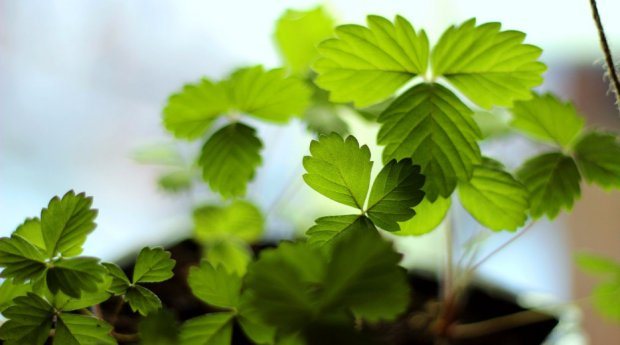
Traditional recipes can only be used as an auxiliary therapy. Some of them actually remove symptoms or reduce their severity, but they still cannot cure hemorrhoids.
Complications and consequences
Hemorrhoids present in an infant have no lethal consequences. However, the pathology is scary with possible alarming complications. The first thing that is very dangerous is cone thrombosis.
Other serious consequences of hemorrhoids include:
Worrying symptoms
- swelling of the anal area and canal;
- paraproctitis (purulent);
- colitis of ulcerative origin;
- cryptite;
- bleeding cracks.
To avoid complications, timely treatment is necessary, which can only be prescribed by the attending proctologist.
Treatment
Newborn babies with existing hemorrhoids are treated by a proctologist (children). Treatment for children is prescribed using drugs approved for children. Basically, most medications are designed for adult patients. Most drugs are prohibited from being prescribed to children for the treatment of hemorrhoidal disease. Drugs are selected based on age, and sometimes surgery is necessary.
In addition to drug therapy, proctologists recommend increasing children's activity, improving nutrition, and monitoring bowel movements to avoid constipation. It is very important to wash your baby after each bowel movement.
Since the baby cannot take care of himself, parents must take care of proper hygiene.
During infancy, the following medications are allowed:
Suppositories for hemorrhoids
- Proctoglivenol.
- Relief ultra (suppositories).
- Vishnevsky ointment.
- Homeopathy.
- Olive or propolis suppositories.
There are therapeutic exercises to eliminate hemorrhoids. Thanks to the developed complex, it is possible to prevent constipation, improve well-being, and improve the functioning of the digestive system. Instead of washing, you can use baby sanitary napkins without additives or fragrance. It is advisable that the napkins do not contain alcohol. Alcohol dries out the epidermis, which leads to cracking and blood loss.
If a child has hard stools, it is necessary to quickly take action to prevent the development of hemorrhoidal pathology.
Diet food
To quickly restore the mucous tissues of the rectal organ in children, it is necessary to streamline their usual life - adjust their diet. It is necessary to monitor your fluid intake daily. The drinking regime should be plentiful, despite the fact that the baby will pee frequently. Moisture is the first aid for hemorrhoids.
In infants, children are allowed to give boiled beets, pumpkin, fermented milk products, soups, apples (baked in the oven).
Reviews from parents about the treatment of hemorrhoids in children
The main problem that most parents according to reviews , is the child’s reaction to any procedures performed. This is normal, because the child instinctively tries to avoid the pain that occurs upon contact with the painful area. For hemorrhoids in a child 7 years of age or older, you can explain why these procedures should be done, and that relaxation will minimize discomfort.
When treating hemorrhoids in children under 3 years of age, parents should use distracting methods during procedures to reduce the child’s psychological defenses.
Reviews about the treatment of hemorrhoids vary depending on the age of the little patient: hemorrhoids in a 5-year-old child will present a parent with one difficulty, and hemorrhoids in a 3-year-old child will face others. Therefore, when choosing methods and means of therapy, you need to rely on the recommendations of the attending physician and your own experience, if the problem of the appearance of hemorrhoids has arisen in a child not for the first time.
Among the methods of traditional medicine, sitz baths are the most popular, since they do not cause any discomfort in children, are well tolerated, and do not cause complications. For severe constipation due to acute hemorrhoids, oil enemas made from sea buckthorn oil can help cope with the problem.
Thus, the answer to the question whether children can have hemorrhoids has a clear positive answer. The complexity of diagnosis and limited availability of medications approved for use make this delicate disease more unpleasant. This means that every person who cares about the health of their child should know about the main features of this pathology, methods of treatment and prevention.
Prevention
Coloproctologist
For preventive purposes against hemorrhoidal pathology in adults and children, it is recommended to drink a lot of water, exercise, and eat healthy foods. To prevent the formation of hemorrhoids, it is necessary to strengthen hygiene, do a set of therapeutic exercises, and in case of constipation, take an enema (not often). It’s very good if mothers massage their babies.
A balanced diet in compliance with medical recommendations helps prevent an outbreak of hemorrhoidal pathology. You cannot prescribe an antihemorrhoidal course to your baby on your own - there is a doctor for that. The first pathological symptoms should be reported to the attending physician. The sooner therapy is carried out, the greater the chance that the disease will not return. If treatment is not timely, other complications arise that are more difficult to treat.
Therapy for childhood hemorrhoids
So, a child has hemorrhoids - what to do? Do not panic, but seek medical help. Children are treated with gentle methods, but if hemorrhoids are a congenital defect, then surgery must be resorted to. Quite often, doctors prescribe the same suppositories and ointments that are prescribed for adults, but in an altered dosage. At the same time, parents themselves cannot be guided by this rule - the doctor will select the treatment. What is allowed for a child of seven years old is prohibited for an infant, etc.
Doctors often prescribe for children (depending on age):
- Ginkor Procto;
- Relief (suppositories and ointment);
- Aurobin;
- Hepatrombin G;
- Mil-par (rectal suppositories).
But these medications can no longer be called gentle. Such drugs are prescribed if previous therapy did not produce the desired results (and it is always individual). If the doctor prescribes suppositories, then suppositories with sea buckthorn oil, calendula, and belladonna will be preferable.
Hemorrhoids are the most common proctological disease that affects both men and women. Unfortunately, the answer to the question of whether children get hemorrhoids is yes. This disease affects older children and even newborns. Hemorrhoids in a child are caused primarily by constipation.
